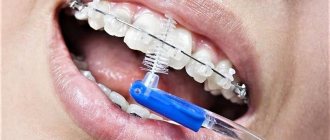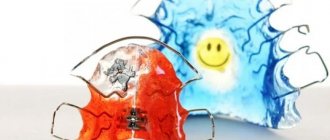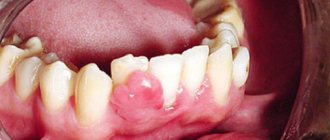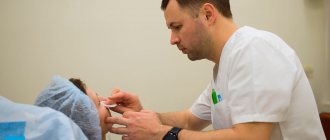Treatment of malocclusion is one of the most popular services in the dental department of the CELT clinic. Advanced orthodontic technologies used by our specialists are able to effectively correct dental anomalies. In case of minor malocclusions, our specialists use dental plates.
Having decided to install a dental plate, you will receive a removable or non-removable orthodontic system in the form of a metal arch with a plastic base made of hypoallergenic material. Its design provides for the presence of clamps. The purpose of the system is to apply gentle pressure and thus correct the dentition. To do this, it has a screw, which must be adjusted as you wear it. This approach allows you to increase the load on the dentition and apply more pressure.
Manufacturing of fixed and removable dental plates
carried out on an individual basis, and they themselves allow:
- adjust the position of the incisors;
- increase or decrease the width of the palate;
- adjust the shape of the jaw;
- accelerate or slow down jaw growth depending on the identified defects.
At CELT you can get advice from a dental specialist.
- The cost of an orthodontist consultation is 2,000
Make an appointment
Indications
In the vast majority of cases, dental plates are used to correct teeth in children under the age of twelve. It is during this period that intensive development of the jaws occurs, due to which the treatment will be as effective as possible. During this period, indications for use are:
- malocclusion;
- incorrect position of teeth;
- crowding or large spaces between teeth;
- too slow or, on the contrary, intense jaw growth.
Plates for teeth
It is also used for treatment in
adults
. In this case, the indications are as follows:
- maintaining the results of orthodontic treatment using braces;
- insignificant alignment of teeth within the dentition.
It is worth noting that competent and timely use of dental plates in childhood gives excellent results - and this despite the fact that its price is much lower than braces! This is why we recommend that parents seek treatment on time: you will not only save money, but also eliminate discomfort for your children (after all, plates are not as noticeable on the teeth as braces).
Contraindications
Orthodontic plates have a minimum of contraindications. So, the absolute ones relate to the following:
- individual intolerance to the materials from which structural elements are made;
- dental periodontal disease, in which there is atrophy of bone tissue and a decrease in the height of the interdental septa;
- diseases of the respiratory system.
There are also relative contraindications. These are carious lesions of the teeth: before applying the plates, they must be eliminated.
Types of plates for teeth
There are two types of bite correction plates:
- Non-removable - fixed on the outer surface of the teeth. Their design includes a system of locks, through each of which a steel arc is threaded. The latter, restoring its original shape, sets the teeth in the required direction of movement. The time it takes to correct teeth with a non-removable plate is about two years, and the treatment method itself can be used for both children and adults;
- Removable ones have a simpler design compared to non-removable ones. They are made from plastics that are non-toxic to the human body. They are fixed to the teeth using metal hooks. In addition, their design may include auxiliary screws and springs. Removable teeth straightening plates can be removed while eating or brushing your teeth. The period of wearing them varies from one and a half to two years and is determined by the doctor.
Fixed dental plates, the price of which is significantly higher than their removable counterparts, are rightfully considered more effective. The choice of type depends on the complexity of the case.
In addition, classification is carried out based on the purpose of application. The types of plates are presented in the table below:
| Type of plates | What is it used for? | Peculiarities |
| Mechanical | Optimal for correcting crooked teeth and helping to straighten them. | They have clasps, arches and screws made of metal. |
| Equipped with a hand-shaped process | Allows you to correct an individual tooth. | The design is such that it allows you to apply pressure to one specific tooth. |
| Functional | They stimulate the development of the jaw and chewing muscles, allow you to restore facial muscles and even correct the shape of the face due to the restructuring of the dentition and the regulation of the temporomandibular joints. | Requires wearing for 14 hours a day. They fix the jaw in one position and are complex structures, when worn, the child cannot eat or speak. |
| Single jawed | Used to correct anomalies of individual teeth on one jaw. | The design includes special screws |
| Vestibular | They allow you to remove the soft tissue that has formed between the teeth by moving it away. | They are placed between the teeth and lips or between the teeth and cheek, depending on the location of the abnormal area. |
| With retraction type arc | Effective in straightening front teeth. | The plate is installed in such a way that it covers the teeth from the outside. |
| With arc with active pusher | Used to correct the palatal position of the upper teeth. | The arc has a base made of hypoallergenic plastic and a spring. |
Results and discussion
The effectiveness of therapy is determined by the form and condition of the drug, methods of its use, which ensure the achievement of an optimal therapeutic effect. The physiological characteristics of the oral cavity include abundant salivation, which significantly reduces the concentration of the substance in the application area, reduces the exposure time of the medication and thereby reduces the therapeutic effect. In addition, the use of some products, due to the specific form and organoleptic characteristics, is not always positively perceived by the patient and poses a certain problem. Periodontal diseases are chronic in nature, and stopping the process or stabilizing it is possible only with an integrated approach to treatment using certain dosage forms, agents and therapeutic and preventive measures.
Modern means used for the treatment of periodontal diseases are represented by solutions, tinctures and extracts, gels, pastes, self-adhesive dressings, and absorbable treatment plates. Dosage forms have characteristic positive features and their own disadvantages, this creates the prerequisites for their further improvement.
Solutions and rinses
Solutions are used for irrigation of the oral mucosa, which is especially effective in the initial forms of marginal periodontitis (gingivitis), in preparation for the removal of subgingival dental plaque, and in the antiseptic treatment of periodontal pockets. Antiseptics are used in the form of solutions: iodine (Lugol's solution), 0.2–2.0% solution of chlorhexidine (for example, "BelSol" liquid concentrate No. 2, liquid for antiseptic treatment), 0.05% solution of Miramistin, 3% solution hydrogen peroxide. Aqueous solutions with antimicrobial and anti-inflammatory effects include: calendula tincture, propolis tincture, liquid extracts “Rotokan” and “Stomatofit”. For periodontal diseases, the “OKI” solution for topical use, containing ketoprofen lysine salt, is also recommended as an anti-inflammatory agent.
Instillation of the oral cavity with rinses has a beneficial effect on the surface of the mucous membrane, including in hard-to-reach places and interdental spaces. The therapeutic and prophylactic effect of liquid oral hygiene products, presented on the modern pharmaceutical and cosmetic market as elixirs, rinses, fresheners, balms, etc., is manifested in an antimicrobial effect.
When using solutions, the drug, as a rule, is washed away by the secretion of saliva and gingival fluid, this reduces its concentration at the site of inflammation and leads to entry into the gastrointestinal tract. Thus, studies have found that when using the Polikatan gel in combination with conventional therapy, the number of cases of normalization of microflora is 23–31% greater in comparison with the use of the aqueous form of the drug.
Prolonging the action of solutions is possible by introducing viscous polymers - for example, the Hyaludent solution with chlorhexidine (a solution based on chlorhexidine and sodium hyaluronate) for the antiseptic treatment of periodontal pockets. Hyaluronic acid creates a drug depot at the site of application and gradually releases chlorhexidine.
Gels and dressings
Dental gels for the treatment of periodontal pathology occupy a significant place. These are drugs such as “Metrogil Denta”, “Hyaludent with chlorhexidine”, “FtorAsept”, “Dicloran®Denta”, “Cholisal”, “Regenirin”, etc. The use of hydrophilic gelling agents (derivatives of cellulose, carbomer, gums of natural origin) in based on dental gels helps to enhance adhesiveness, focus the action of the active components of the drug with prolongation of the pharmacological effect. In addition, they have good thixotropic properties, fluidity and high permeability. The above dental gels are freely sold through pharmacy chains; their independent use for application is acceptable at home.
A promising basis for dental gels is the substance Tizol: it is convenient for application, does not damage the mucous membrane, is non-toxic, and has high adhesive ability. The drug "Tizol", used in the "linear" technique, is applied in a thin layer to the gingival surface - after 30-60 seconds the applied layer turns into a thin transparent film, which the patient practically does not feel.
Therapeutic periodontal dressings are used to prolong the effect of the drug in periodontal pockets. They have an anti-inflammatory effect, stimulate the regeneration of periodontal tissue after surgery and during therapeutic treatment. Periodontal therapeutic dressings mainly have an ointment base; the pharmacological prescription is represented by anti-inflammatory drugs, antibiotics, vitamins and immunostimulants.
The use of therapeutic dressings increases the exposure time of drugs on periodontal tissues to 2 hours or more. The disadvantages of their use are considered to be a violation of tissue trophism with the development of bedsores, the phenomenon of maceration, discomfort and unpleasant taste sensations, even nausea.
Pastes
In the complex of rehabilitation measures after deep curettage and operations on periodontal tissues, plastic self-hardening pastes are used. Therapeutic pastes “Septo-Pak” and “Parasept” are recommended for use to protect medicinal components placed in the gum pocket from being washed out by saliva. Such protective compresses are applied to periodontal tissues for 2–3 minutes, the final hardening of the paste occurs after 20–30 minutes.
Therapeutic and prophylactic dressing pastes “Vitadont” and “PPA1-RAD” stimulate reparative processes in periodontal tissues and promote the healing of traumatic and other damage to the oral mucosa. The exposure time of the dressing paste sometimes lasts several hours, and this does not allow it to be used as an isolating agent.
Anti-inflammatory drugs used in the treatment of periodontal pathology also include Solcoseryl dental adhesive paste and Asepta dental balm, prepared on the basis of pectin and cellulose derivatives. When applied locally to the gum mucosa, these drugs swell due to their base and are fixed, thereby prolonging the therapeutic effect to 15–30 minutes. The disadvantage of the form is the need to pre-dry the gums (when applied to an undried surface, the duration of action may be reduced) and the need to moisten the balm with water after application.
Films and plates
Dental films or self-absorbable sheets are also effective means of local antimicrobial and anti-inflammatory therapy. The basis of the self-absorbing plates “KP-Plast” “KP-Plast-phyto”, “KP-Plast-vita”, “KP-Plast-antimicrobial”, “Plates CM-1” is represented by natural polysaccharides. In addition, dental self-adhesive films “Diplen Denta” and collagen plates “Farmadont” are used.
They are applied directly to the affected area of the mucosa, the release of medicinal components is prolonged, for different compositions, lasts from 2 to 12 hours. The advantages of dental films are accuracy of dosage, constant concentration of biologically active substances during exposure time, strong fixation to wet and hard tissues, sufficient gas permeability for the normal course of reparative processes, ease of use, which makes it possible for patients to use them independently.
Good adhesion of films and plates is ensured by the polymer included in their composition (gelatin, collagen, polyvinyl alcohol). The plates, in contact with the wet gum, absorb saliva and gradually turn into a gel, fixing on the surface of the gum. A feature of Diplen-Dent films is the presence of two layers - hydrophilic and hydrophobic. The hydrophilic layer (hydrophilic side) has the ability to adhere to the moist mucous membrane. The outer hydrophobic layer is plastic, well modeled on the surface of the oral mucosa and isolates the affected area from external mechanical, chemical and bacterial influences.
Muds and mineral salts
Currently, the production of gingival applicators based on therapeutic mud (Saki silt sulfide and Tambukan) has been launched. They are highly hygienic, with good preservation of the active component, easy to use, which allows them to be used not only in dental offices of sanatoriums, but also at home. When irrigating the oral cavity with mineral water with brine, bischofite and other natural salts, elements of the keratinized epithelium are dissolved, the contents of pathological periodontal pockets are washed away, blood and lymph circulation of the tissues of the periodontal complex is improved and, as a result, an anti-inflammatory effect is manifested. A current trend is the development and production of dental gels and oral hygiene products based on natural mineral salts to expand the possibility of their use in the treatment of periodontal diseases.
Dental plates for children
Having looked at the photos before and after wearing dental plates on children’s teeth, you will conclude that they are very effective - and you will be right. With the right approach, they can be called the best way to correct a number of malocclusions. Their use is advisable under the age of 12 years during active jaw growth. To correct serious anomalies, non-removable structures are used. If there is a slight curvature or prevention is required, removable plates are ideal. As already mentioned, the production of plates is carried out on an individual basis and requires taking impressions and making plaster models. It is very important that the surface relief of the gums and palate coincide exactly. To do this, a special adjustment is carried out, which takes no more than 10 minutes.
How long should I keep the dental strips on?
Depending on the manufacturer and composition of the product, whitening strips must be left on for 5 to 30 minutes. At this time, under no circumstances should you smoke, eat, drink, or even sleep with stripes on your teeth. During the entire whitening course, it is not recommended to eat foods that stain the enamel.
If you strictly follow the instructions, the whitening procedure will be high-quality and effective; if not, problems with your gums and teeth are possible. That is why, before choosing and using whitening strips, it is recommended to consult with your doctor!
Are there any difficulties?
According to reviews, dental plates are effective, but in the case of children there is one problem. It lies in the fact that you need to wear them at least 22 hours a day for 12 to 18 months. This does not always please young patients who are not delighted with the presence of a structure on their teeth, which requires getting used to and which may cause teeth pain at first.
It is important to explain to the child that plates are much less noticeable than braces, which will have to be worn if the plate does not give the desired effect... And to achieve the effect, you need to use it correctly. It is better to undergo a much simpler course of treatment now than to resort to much more complex treatment in adolescence - especially since the result will be obvious! The child needs to be taught:
- Wear the plate in the morning;
- Remove the plate to brush your teeth before going to bed;
- Do not remove the system during the day;
- Tighten the structure screw in a timely manner.
How to use teeth whitening strips?
use teeth whitening strips 1-2 times a day, but not earlier than 12 hours after the previous procedure. This is very important, because the tooth enamel needs to rest a little and recover; after all, whitening is a serious and difficult test for our teeth. In fact, the composition of the gel in strips is practically no different from what is used in dental clinics. As a rule, the result is observed after 14-28 applications.
Each strip is used only once, and can be purchased at pharmacies. It will be more economical to buy a package with a large number of strips. Before using the product, you need to rinse your mouth with clean water and wipe your teeth with a napkin to get rid of excess moisture. It is very important to distribute the strips correctly: long ones for the upper teeth, short ones for the lower ones. Check that the strips do not touch the gums; it is better to stick them in front of a mirror. After completing the procedure, you need to brush your teeth with a soft-bristled brush or rinse your mouth thoroughly with clean water.
Manufacturing and design features
Making plates to correct a bite is not an easy process, requiring a preliminary x-ray examination of the dentition. In addition, it is preceded by taking impressions and making control models. By conducting a preliminary assessment using them, the orthodontist decides how accurate the model is and whether it is suitable for the patient. If necessary, correction and re-fitting are carried out.
Plastic is used to make the base of the plate. The shape of the base exactly repeats the relief of the dental contour and gum surface. The base itself is durable and moderately rigid. The arc of the plate is made of steel wire and has hooks that are fixed on the cutters. As the position of the teeth changes and the jaw grows (when it comes to a child), the system is corrected.
Benefits of orthodontic plates
Although bite plates are only effective for minor malocclusions, they have a number of other benefits:
- Convenient to use. The design of the plates allows you to easily and quickly remove them while eating or brushing your teeth;
- Prompt production. The average production time for plates is from 2 to 4 weeks. At the same time, a removable type structure is manufactured faster than a non-removable one;
- Affordable price. The average price of a plate for correcting a bite is 2 times lower than the price of inexpensive braces.
What are they needed for?
Dentists recommend using plates in the following cases:
- Gingivitis.
- Periodontitis.
- Bleeding gums.
- Periodontal disease.
- Injuries and damage to gums.
- Recent surgery, such as tooth extraction or implantation. Active components allow you to speed up the process of tissue regeneration.
The only contraindications can be identified as an allergic reaction. It is manifested by severe itching and increased swelling. In this case, you should thoroughly rinse your mouth with an antiseptic solution and stop treatment with Farmadont. Carefully study the composition before using the plates. Before use, consultation with a specialist is recommended.
What are the disadvantages of dental plates?
The use of records has a number of limitations. First of all, they are due to the fact that the functionality of the plates does not allow them to move teeth. It only makes it possible to hold them in a certain position, which does not allow them to be used to correct serious anomalies. At the same time, it is worth noting that often the reason for the insufficient effectiveness of treatment is a reduction in the time of wearing the structure. As for other disadvantages, these include:
- the need for long-term use;
- a number of uncomfortable sensations during adaptation;
- minimal pressure compared to braces;
- age restrictions for use;
- the need for constant monitoring by parents (in the case of children).
Installation of plates
Installing the plates is a fairly quick, painless process that takes no more than 10 minutes. Most of the time is spent on final adjustment of the system. That is why the first installation of removable plates is carried out in the presence of the attending physician. The doctor will give detailed instructions on the rules for its use, care and how to properly regulate the tension of the arc. The first correction is carried out after the appearance of a visible result - it is this that determines the subsequent course of treatment and its duration. It is important to understand that at first the plate will be perceived as a foreign body in the mouth, which can cause discomfort, impaired diction and increased salivation. The adjustment period averages up to one week; after this the structure ceases to be felt.
How to care for the plates?
In order for the plate to serve the required time and not break, it is necessary to provide it with appropriate care. It is as follows:
- brushing with toothpaste every day;
- disinfection every week;
- storage in a special container, closed;
- oiling the screw;
- removing the plate while eating, brushing teeth, practicing martial arts, boxing and water sports.
Do you dream of beautiful teeth? Contact the orthodontists of the multidisciplinary clinic CELT!
Make an appointment through the application or by calling +7 +7 We work every day:
- Monday—Friday: 8.00—20.00
- Saturday: 8.00–18.00
- Sunday is a day off
The nearest metro and MCC stations to the clinic:
- Highway of Enthusiasts or Perovo
- Partisan
- Enthusiast Highway
Driving directions











